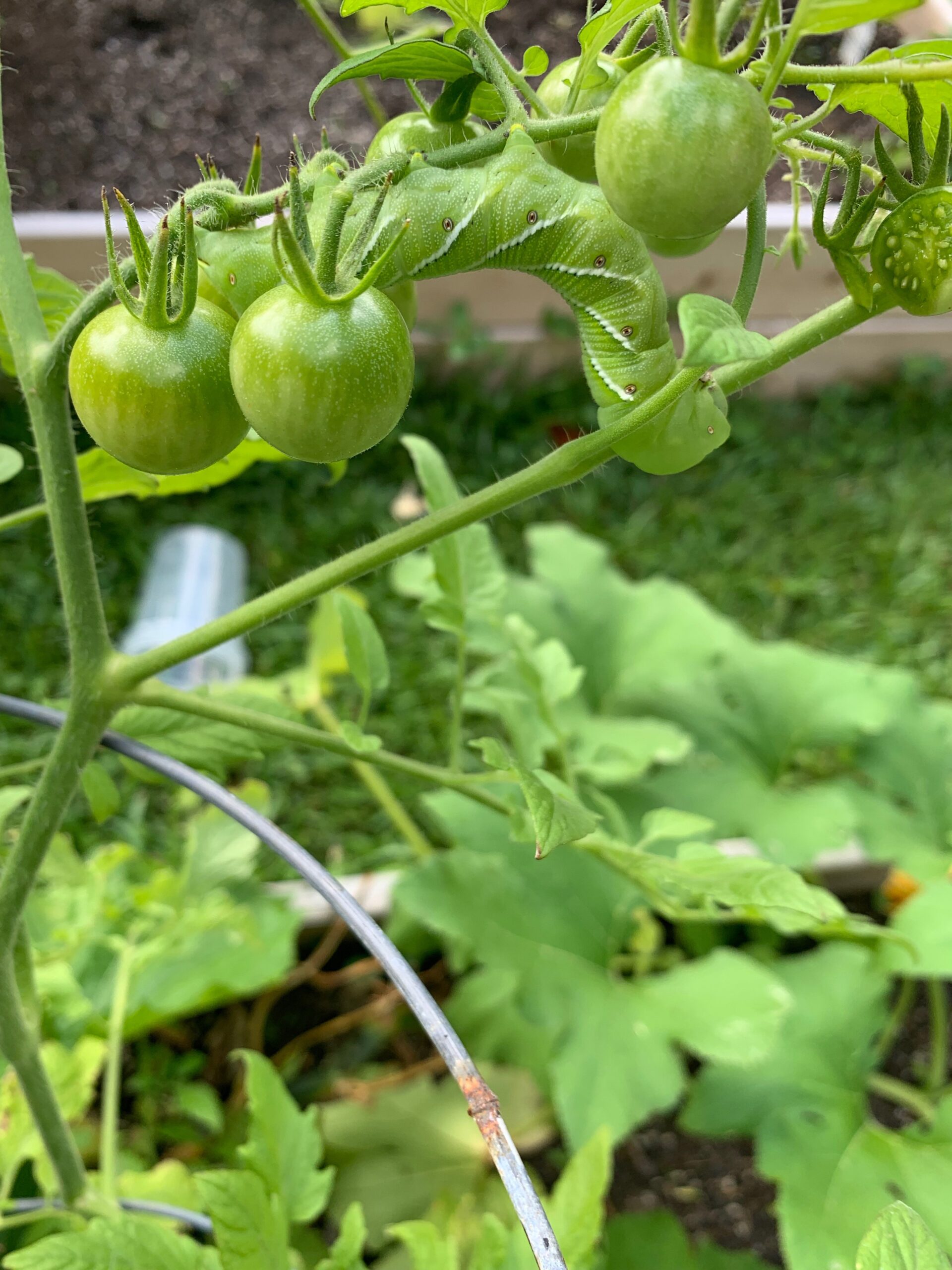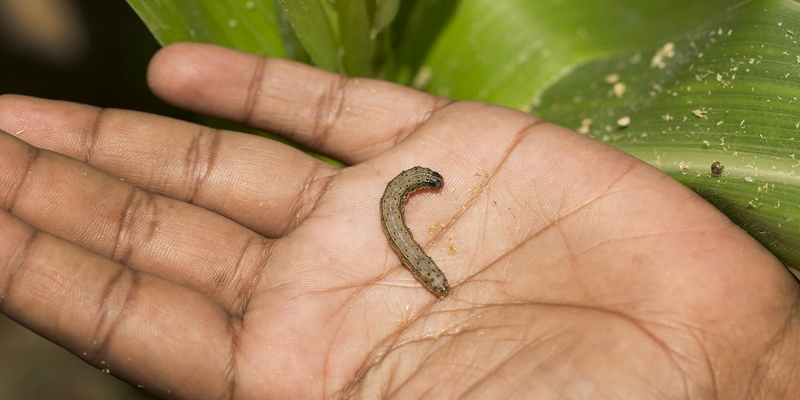
So, you’ve got yourself a garden, and you’re tending to your precious tomato plants with care. You’re dreaming of juicy red tomatoes, ready to be plucked and enjoyed in a summer salad. But what’s this? The caterpillar eating tomato leaves? That’s right, folks, we’ve got a tomato leaf-munching intruder in our midst. In this article, we’re going to dive deep into the world of these leaf-loving critters, explore why they’re feasting on your tomato plants, and most importantly, learn how to deal with these unwelcome garden guests.
Table of Contents
The Caterpillar Eating Tomato Leaves – A Hungry Intruder
When it comes to caterpillars, they ain’t picky eaters, but they sure have a soft spot for tomato leaves. Let’s dig into the nitty-gritty of these leaf-loving critters.
Who Are These Culprits?
So, who are the masked bandits behind the “caterpillar eating tomato leaves” gig? Well, they’re none other than the larvae of various moths and butterflies. These sneaky little fellas can wreak havoc on your tomato plants. Here’s a list of the usual suspects:
Hornworms

- The tomato hornworm and tobacco hornworm are large green caterpillars with white stripes and a horn on their rear end.
- They can grow up to 4 inches long and eat tremendous amounts of foliage quickly, stripping entire branches bare.
- Hornworms blend in well with tomato plant stems and leaves, making them hard to spot until damage is done. Check undersides of leaves.
Cutworms

- Cutworm species like the black cutworm and variegated cutworm are plump, soft-bodied caterpillars up to 2 inches long.
- They hide in soil by day and emerge at night to chew through stems at ground level, killing young transplants.
- Use collars around seedlings to protect from cutworms slicing stems. Also avoid weedy garden areas.
Armyworms

- Beet armyworms and yellow-striped armyworms form large “armies” that march en masse devouring plants.
- They can completely defoliate tomato plants overnight, just leaving stems. Extensive webbing may be visible.
- Pick off and destroy armyworms when detected early to prevent exponential spread. Monitor for clusters of tiny dark eggs.
Signs of Trouble
Now that we’ve identified our suspects, how can you tell if your tomato plants are under attack by the “caterpillar eating tomato leaves” gang? Look out for these telltale signs:
- Chewed Leaves: If you see ragged, chewed-up leaves on your tomato plants, it’s a clear indication that caterpillars are on the prowl.
- Frass (Poop) Piles: Caterpillars leave their mark not just on leaves but also in the form of tiny, pellet-like droppings called frass. If you spot these, the caterpillars are nearby.
- Holes in Fruits: Sometimes, these leaf-loving rascals take their mischief a step further and bore holes into your tomatoes. You’ll find little tunnels and damaged fruit.
Battle Plan – How to Deal with the Caterpillar Onslaught
Now that we’ve got the lowdown on our tomato leaf-munching culprits, it’s time to fight back. Here’s your battle plan to protect those precious tomatoes.
Hand-Picking
- Effectiveness: Hand-picking caterpillars is a highly effective method, especially for smaller gardens or when you have a relatively low infestation. It allows for targeted removal without harming beneficial insects or other garden inhabitants.
- How to Do It: Inspect your tomato plants regularly, especially the undersides of leaves where caterpillars often hide. When you find them, simply pick them off by hand, wearing gloves to protect your hands from their spines or secretions.
- Benefits: This method is entirely natural and chemical-free, making it an eco-friendly option. It also gives you the satisfaction of actively protecting your plants.
Natural Predators
- Beneficial Insects: Encourage the presence of ladybugs, parasitic wasps, and birds in your garden. These natural predators feed on caterpillars and help keep their populations in check.
- Ladybugs: Ladybugs are voracious consumers of aphids and other soft-bodied insects, including caterpillars. You can attract them by planting nectar-rich flowers and providing shelter.
- Parasitic Wasps: These tiny wasps lay their eggs inside caterpillars, and their larvae feed on the caterpillars from within, eventually killing them.
- Birds: Birds like sparrows, robins, and bluebirds often forage for caterpillars in gardens. Provide bird feeders, birdhouses, and birdbaths to attract and support them.
Neem Oil Spray
- How It Works: Neem oil disrupts the feeding and growth of caterpillars. It interferes with their ability to molt and grow, ultimately leading to their demise.
- How To Use: Prepare a neem oil and water mixture following the guidelines provided on the product’s label. Spray the solution on your tomato plants, making sure to coat both sides of the leaves. Apply in the evening or early morning to prevent sunburn on the leaves.
- Frequency: Repeat the neem oil spray application every 7-14 days or as needed, especially after rain or if you notice new caterpillar activity.
- Safety: Neem oil is generally considered safe for humans, pets, and beneficial insects when used as directed.
Organic Pesticides
- Bt Explanation: Bacillus thuringiensis, or Bt, is a naturally occurring bacterium that produces proteins toxic to caterpillars when ingested.
- Application: Choose a Bt product labeled for vegetable use, mix it with water, and apply it to your tomato plants. Ensure you adhere to the guidelines set forth by the manufacturer.
- Safety and Environmental Benefits: Bt is selective in its action, primarily affecting caterpillars while sparing other organisms. It’s considered safe for the environment and is an excellent choice for organic gardening.
- When to Use: Consider using Bt when caterpillar infestations become severe and other methods are insufficient to control the problem.
Prevention is the Best Medicine
As the saying goes, it’s better to prevent an issue than to have to remedy it later. To keep those caterpillars from even thinking about your tomato leaves, follow these preventive measures:
Plant Deterrents
Some plants don’t sit well with caterpillars. Plant herbs like basil, marigolds, or nasturtiums near your tomatoes as natural repellents.
Row Covers
Row covers act as a physical barrier, preventing those caterpillars from landing on your tomato plants in the first place. Just remember to remove ’em when it’s time for pollination.
Crop Rotation
Mix things up in your garden from season to season. Caterpillars tend to hang out where they had a feast last year. By moving your tomato plants around, you’ll keep ’em guessing.
The Caterpillar Eating Tomato Leaves – A Part of Nature
Before we wrap things up, let’s take a moment to appreciate the delicate balance of nature. While caterpillars can be a pain in the garden, they’re also a vital part of the ecosystem. They eventually metamorphose into beautiful butterflies and moths, pollinating flowers along the way.
Conclusion – Keeping the Balance
So, there you have it, folks! The “caterpillar eating tomato leaves” may be a nuisance, but with a bit of know-how and some preventive measures, you can keep your tomato crop safe and sound. Remember, it’s all part of the grand dance of nature, where caterpillars play a role too. So, protect your tomatoes, but don’t forget to admire the beauty of these leaf-loving critters when they transform into graceful butterflies.
In this article, we’ve covered everything from identifying these tomato leaf-munching culprits to fighting back and preventing their attacks. By following these tips and tricks, you can enjoy juicy tomatoes without worrying about the “caterpillar eating tomato leaves” gang ruining your harvest.
